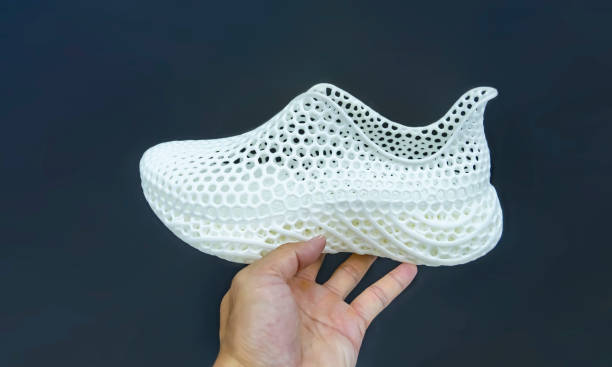The 3D printed wearable market is on a remarkable growth trajectory, expected to generate an impressive USD 4,251.70 million in 2023. With projections estimating that this market will reach USD 10,246.60 million by 2033, it reflects a robust CAGR of 9.20% during the forecast period. This growth is being fueled by increasing investments from apparel companies in 3D printing technology, paving the way for innovative designs and personalized wearables.
Key Drivers of Market Growth
- Customization and Personalization: One of the standout advantages of 3D printing is the ability to create customized products tailored to individual preferences. Consumers are increasingly seeking unique items that reflect their personal style, and 3D printing allows for intricate designs and personalized features that traditional manufacturing cannot match.
- Sustainability Focus: The fashion industry is facing mounting pressure to adopt sustainable practices. 3D printing significantly reduces waste by using only the necessary materials to produce wearables, thus minimizing the environmental impact. This eco-friendly aspect appeals to a growing demographic of environmentally conscious consumers.
- Technological Advancements: Continuous advancements in 3D printing technologies have made it easier and more cost-effective for brands to incorporate 3D printing into their production processes. Improved materials and printing techniques enable the creation of functional and durable wearables that meet consumer demands for quality.
- Collaborations and Partnerships: Many apparel companies are forging partnerships with technology firms to leverage their expertise in 3D printing. These collaborations are driving innovation and expanding the application of 3D printing in wearables, from clothing to accessories and beyond.
Emerging Trends in the Market
- Integration of Smart Technologies: The fusion of 3D printing with smart technology is opening new avenues for wearables. From fitness trackers to health-monitoring devices, 3D printed wearables are becoming multifunctional, enhancing the user experience.
- Fashion and Functionality: The line between fashion and technology is blurring, with designers creating aesthetically pleasing yet functional wearables. 3D printing allows for complex geometries and lightweight structures that can elevate the style of traditional wearables.
- Expansion into Diverse Sectors: While the fashion industry is a primary driver, 3D printed wearables are also making strides in healthcare, sports, and automotive sectors. From personalized prosthetics to performance-enhancing athletic gear, the applications are vast and varied.
Regional Insights
- North America is currently leading the 3D printed wearable market, thanks to a strong technology base and high consumer acceptance of innovative products. The presence of major players and a robust manufacturing infrastructure contribute to the region’s dominance.
- Europe is also witnessing significant growth, with brands increasingly embracing sustainable practices and technological advancements in 3D printing.
Challenges in the Market
Despite the promising outlook, the 3D printed wearable market faces several challenges. High initial investment costs for 3D printing technology and the need for specialized skills can hinder adoption among smaller brands. Additionally, regulatory hurdles related to safety and quality standards for wearable technology must be navigated.
Key Takeaways
- 3D-printed wearables are the largest consumer in the United States, growing at a CAGR of 5.30%.
- With a global revenue share of 27.30%, the footwear segment dominates the market.
- The 3D printed wearable market in China is projected to expand at a CAGR of 10.30% over the forecast period.
- Globally, online retailers own 66.10% of the market for 3D-printed wearables due to the growth of e-commerce businesses.
- A CAGR of 9.20% is expected between 2023 and 2033 for 3D-printed wearables in India.
Competitive Landscape
3D printed wearables are a moderately competitive market with several companies operating. Players are increasingly targeting niche markets for specific demographics. Investing in innovation and forming strong partnerships has been beneficial to the market. Several 3D-printed wearables have been introduced over the past few years due to these developments.
Market Developments Include
- In June 2023, researchers at Nanyang Technological University, Singapore (NTU Singapore), Panasonic Factory Solutions Asia Pacific Pte. Ltd. (Panasonic), and Singapore Centre for 3D Printing (SC3DP) designed a new 3D printer that prints smart, flexible devices quickly and easily using multiwavelength lasers.
- In October 2023, HP and Brooks Running announced a partnership to develop the Exhilirate-BL shoe with HP’s 3D printing technology. Using technology, biomechanical research, engineering, and design, Brooks BlueLine Lab footwear is at the forefront of advancing running shoes.
About Future Market Insights (FMI)
Future Market Insights, Inc. (ESOMAR certified, recipient of the Stevie Award, and a member of the Greater New York Chamber of Commerce) offers profound insights into the driving factors that are boosting demand in the market. FMI stands as the leading global provider of market intelligence, advisory services, consulting, and events for the Packaging, Food and Beverage, Consumer Technology, Healthcare, Industrial, and Chemicals markets. With a vast team of over 400 analysts worldwide, FMI provides global, regional, and local expertise on diverse domains and industry trends across more than 110 countries.
Contact FMI:
Future Market Insights Inc.
Christiana Corporate, 200 Continental Drive,
Suite 401, Newark, Delaware – 19713, USA
T: +1-845-579-5705
For Sales Enquiries: sales@futuremarketinsights.com
Website: https://www.futuremarketinsights.com
LinkedIn| Twitter| Blogs | YouTube
